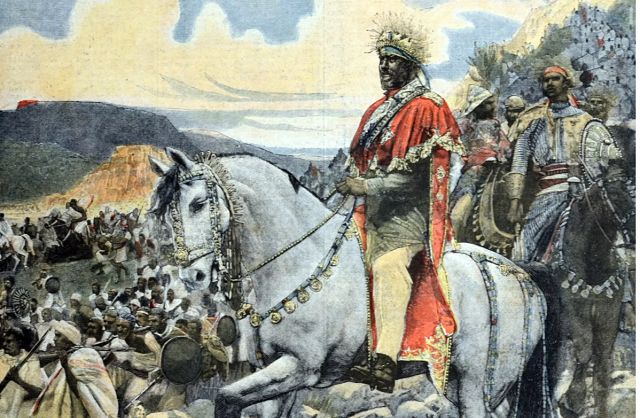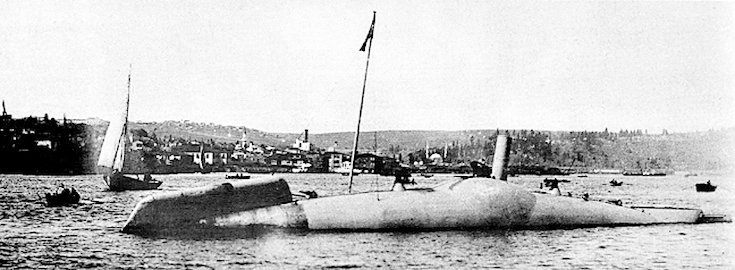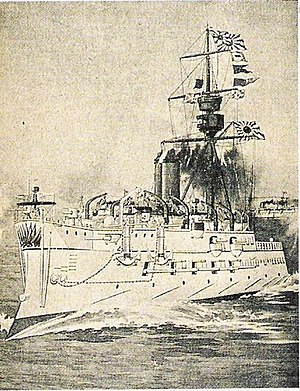One of the things as host that I personally really enjoyed and wanted to emphasize as I played around and bent (or broke) history before the beginning of the game is the impact of certain conflicts in altogether different time periods. From the likes of the German Wars, which took on another level of ferocity and partisan conflict as well as the grand conventional maneuvers of armies and nations as German nationalism bubbled the pot over as the German Question continued to remain unanswered, these changes in history had significant impact on the course of the game. None perhaps were so significant as the shift in history in the former United States of America, however, which saw the defeat of Lincoln at the polls in 1860 and the emergence of an extremely contentious Second Great Compromise which would delay the splitting of the Union for another two decades. When it arrived, and once I began personally processing the war, it possessed a completely different character; a Civil War of the Gilded Age.
Having taken over the processing, as a host this became one of the most fascinating aspects of the game, as I watched the war take on new dimensions of ideology derived from the Gilded Age superimposed upon the ideals which drove the original Civil War, and eventually saw the two Americas, played by Shatari and Admiral Thrawn, diverge in two completely different directions of ideology and the fundamental understanding of the American way. The North and South originally split over questions of slavery and States’ rights, but as the conflict developed and grew, the nature of the conflict and why it was fought changed until nearly unrecognizable to those who shouted for war in the halls of Congress in that chilly late December of 1883. A once relatively clear-cut war, which nonetheless pitted brother against brother, father against son, now became more complex as questions long-rooted or new emerged, including over the rules of war and treatment of prisoners, the ethics of partisan warfare, the role of the government in economics and industry, the struggle against foreign powers or their role in independence, and the place of political parties in modern democracy. By the end, a captivating new narrative emerged in the American Civil War and the peace that, perhaps, may have been soon to follow, of two Americas battling over the fundamental questions of (economic) freedom or social equality at the heart of the American spirit: questions which would continue to plague American society, into the modern day.

For many, the role of jobs, free enterprise, and workers rights loomed as high as moral issues of slavery in the ideological basis for the American Civil War
With the Confederacy in a strong position, having weathered the Northern storm on Richmond (albeit with terrible losses) and especially having marshaled the support of the European empires to their cause, peace seemed within grasp, but I shall leave it in the hands of the players in the post-game to decide whether now was the time to make accord and reconcile their differences. Nonetheless, before the war even finished, new societies unrecognizable to those before it began had begun to emerge, both as radical in their changes as in their opposition. In the North, the Civil War thrown in the midst of the excesses as well as strong industrial development in the Gilded Age brought an early birth of the Progressive Age, and perhaps the beginnings of a more pure and wholehearted commitment by the Federal Government into the affairs of industry and economic equality than any government before or since. Nationalization of the titanic Bethlehem Steel Works proved only the beginning, and shifting to a new base of support for their war-time and domestic policies, the Congress of President Rye implemented a radically transformative act with the complete nationalization and control over the nation’s Financial Sector: an act that would have had tremendous reverberations throughout the world and the globe’s economic markets. In an age in history where the government would side with corporations and captains of industry to bloodily crack down on strikes and in all affairs adopted a laissez-faire attitude to internal economics and the well-being of the worker and farmer, this was an enormous and fundamental shift, including commitment to the rights to “Full and Remunerative” Employment for all citizens, perhaps possible only due to the stresses of the war and the hysteria of invasion brought by the intervention of the European powers.
In the South, meanwhile, Shatari had succeeded in bringing the Europeans into the war on their side; in force. But he and his chief agent through President Reagan faced the unenviable task of reconciling the distasteful institution of slavery in the Confederacy to the public abroad, while charting the foundations of his newly founded nation after the war. In this he took to a novel, and exceptionally polar-opposite, approach to that being adapted in the North, coincidentally building the domestic support for the Southern war effort despite the darkest of days at the front and disruptions at home. Starting early on with measures that further consolidated slaves into the more manageable hands, economic reforms through tax exemptions nonetheless began laying the groundwork for a policy to eventually phase out slavery through the development of highly autonomous “Company Towns” dispersing industry to the countryside and introducing cheap paid labor as substitution for more expensive capital investments in slaves. This highly libertarian approach was highly practical both to Southern economics and means of the government, and to the sensibilities of the plantation elite (as well as robber barons defecting from the North), that would have on the face of it transformed the Confederacy’s economy and society from a slave-owning plantation economy to a new, “freer” society under the thumb of captains of industry and plantation owners smoothly transitioning from the prior indentured caste-based system of labor. In all, it would create, in Shatari’s own words, a “libertarian ****-hole”, but it would give Confederacy’s society a means of (relatively) smoothly transitioning out of the internationally reprehensible institution of slavery which threatened their crucial links with Europe, and giving the means for the post-war reconstruction of the battle devastated South, so laying the foundations of a new and sustainable (if not without its problems) nation to be introduced upon the world stage.
Beyond the realm of the two main combatants in the East, across the Plains and towards the Pacific major events were transforming the face of the West, which in some cases was more civilized by the day, but in others more Wild than ever. California, long autonomous from Washington over disagreements from the Second Great Compromise was prospering from the conflict over the old centers of America in the East, and now exercised its rapidly growing industrial strength to display its now de-facto independence from either faction. Though removed from player control as a host executive decision halfway through, and perhaps not as strong as originally envisioned after the initial design process, the California Republic would nonetheless have a bright and significant future ahead of itself as poor and wealthy alike fled the bloodbath in the East seeking a more prosperous future in California. Industry was booming, and as the Republic rapidly established itself as a third center of economics and politics the equal to those on the Atlantic Coast, it would begin flexing its growing strength, beginning with an intervention into the cut-off and anarchic Southwest territories. Politically, its policies straddled the lines espoused in the East, finding a favorable balance between increasing economic development and the rights of workers, even pushing for voting rights for women, and began projecting itself as The Champion of the Progressive Age, holding aloft the torch of civilization dropped by their Eastern countrymen to return America to the light.

Nonetheless, their intervention into the Sonora Desert and Colorado Plateau brought them into a conflict of their own with another Western state with its own very different and very insular vision of American values: one built squarely, even totally, upon their unique faith of the Mormon doctrine. Deseret, centered in the (effectively former) state of Utah, had long been left to their own devices, and their marriage of strict religious tradition with American political principles resulted in the strengthening and absolute consolidation of a theo-democracy, as originally laid down by pioneering founder of Deseret Brigham Young. The intervention of the “profligates” from Sacramento, along with the inflaming of long held tensions with the Natives of the region, into affairs considered within their purview in the Southwest saw the two former-states break into open war, the miniature of the titanic conflicts in the East, but just as bloody. Initial fighting, characterized by multi-polar engagements of every kind between Californians, Mormons of the Nauvoo Legion, Union-loyal and independent Southwest townships, and Apache and Pueblo Indians spread across the arid American Southwest, but quickly shifted focus to a new front over the crucial Silver Mines of Nevada. Campaigns in the Sonora were marked by thirst and stringent supplies, and the former sleepy town of Las Vegas would become a logistical hub and battleground eventually won by California by the construction of a brand new railway, and with it the arrival of the heavy guns of their invincible “land battleship”, an ironclad armored train known as the “Queen Calafia”.
Soldiers in the battle fought tenaciously, but complained in letters home that patrolling in the Mojave made them wish for a volcanic winter.
While their Southwestern kin fought for independence and survival on their home territories, those on the high prairie of the Great Plains perhaps won the most remarkable victory of all. An amalgamation of dozens of tribes, some former enemies or collaborators with the US Army and all with long histories on the Plains, they had nonetheless under the magnetic leadership of legendary chiefs and wisemen managed to keep together and even expand to force the total withdrawal of the Union’s garrisons in the West. Although having scored a surprise victory against them in the prior year, the mixed force of US Cavalry, cowboys, buffalo hunters, and outlaws known as the “Rough Riders” led by a young statesman from New York called Theodore Roosevelt were eventually called back from Colorado on an even more audacious raid, nonetheless leaving the Great Plains to the Native Rising. With opposition to their forces gone, a century of repression, atrocities, massacres, and degradation of some of the most proud and magnificent horse peoples on the globe was at last over. Convening the Seven Council Fires and all the leadership of the Tribes of the Great Plains, including such legends as Sitting Bull, Crowfoot, Poundmaker, and Chief Joseph, alongside new heroes like Bloody Buffalo Woman and Scarlet Sky, the Indian Country was officially proclaimed with envoys sent to the world for recognition, and having at last attained their freedom and the first promising rebounding of the populations of the sacred buffalo, they announced an end in the affairs of the White Men to the East. Their war, fought over half a dozen generations and seeing the wholesale eradication of families and tribes, was over. Now they are free, forever.

Independent at last: the chiefs of the Indian Country a recognized sovereign state among the world's nations
The events on this continent and the consequences they would have upon the world cannot possibly be underestimated. Though some acts may remain to have been played out, the war was practically finished, barring disaster or miracle, and the United States of America was now divided, for better or for worse. New independent nations were born from the maelstrom to join the world: The Confederate States of America, the California Republic, the State of Deseret, and Indian Country are all now de facto or de jure entities, fresh faces created from a discontent Union. What comes for the identity of the banner holder of the old Republic in the North, as the former United States is referred to now, remains to be seen, but even as the potential for a reduction of fighting and armistice arises in the East, new flashpoints and festering questions remain in the West. The Southwestern territories are an anarchic battleground against practically all comers, with Mexico eying an opportunity to regain those long-lost territories stolen from them in the US’s landgrab in the Mexican-American War decades ago, while the states of the Pacific Northwest, long the victim of uncontested and indiscriminate commerce raiding and piracy by Confederate squadrons, are said to offer their allegiances to any country capable of offering them protection, including the British and Russian Empires.
Nonetheless, from the ashes, opportunity and hope sprout. A new vision is appearing for the future of the American nation; or nations, as it were, in bitter opposition but perhaps now free to pursue their own values in their countries of their own. The Confederacy has given their solemn promise to phase out slavery by peaceful means and protect the rights to property and free enterprise, and despite the devastation of war, the world’s sixth largest economy is well-placed to recover and prosper under the exceptional leadership of President Reagan. The Northern States, whose official name is yet to be decided in the case of settlement with the Southern rebels (though suggestions such as the Free Union have been floated), has gained sweeping powers over society and the economy during the course of the war, and although many were gained with the premise of their return to private hands after its end, they possess the unparalleled means to reshape society into a better world, unlike any President since George Washington himself. Lastly, in regards to the world, should peace be signed, it is liable that the uprising in Cuba will peter out, but the expansion of the war to international theaters heralds a new era in American policy, and it is likely that American influence under one banner or another will only continue to grow across the globe. Wartime buildup has given the Americans considerable new technologies the par or better than their European counterparts, and all three resultant nations of the Free Union of States, the Confederacy, and the California Republic now possess powerful navies steaming ahead with top of the line battleships with which to project their influence. While the CSN and FUSN ships contest the Atlantic, the California Republic is expected to become the main champion of the West in the Pacific, and an increasingly crucial counterweight to the expansionist Japanese Empire and the rising Polynesian Confederacy.

The Assassination of Union President Peers Rye in New York City
Peace, should it come, was not without cost, and not just on the battlefield. Homes have been burned, fields destroyed, entire states laid to waste from Virginia to Missouri, and the scars left by this American Civil War will take long to heal; if ever. Amid this maelstrom of battles, foreign interventions, and political upheaval, not even Presidents are safe. President Rye, the steady hand at the helm of the Union through the darkest days of the war, was en route to a performance in New York City when a young man in opposition to the draft and the war having lost six of his eight brothers in battle drew a gun on the president’s carriage and shot him three times in the chest. Despite the most fervent attempts to save Peers Smith Rye, he passed at 6:13am, December 31st, on the eve of hopefully the last year of this war. Succession changed hands duly to his Vice President, Daniel Warren, but his leadership in comparison to that monolith of the American war effort cannot be even set in the same theater. An emergency election has thus been called to replace the bitterly mourned leader, even among his detractors, despite the disruptions of war to find a worthy successor who will lead the nation out of conflict and into eventual peace. All in all, however, for the leaders of the country, North and South, East and West, and to the players who have fought tenaciously despite the odds and terrible losses, as we close the book on this chapter of the game and American history I offer the wise words of the front-running candidate for the Northern presidency, and a toast to the world you so brilliantly created;
“It is not the critic who counts; not the man who points out how the strong man stumbles, or where the doer of deeds could have done them better. The credit belongs to the man who is actually in the arena, whose face is marred by dust and sweat and blood; who strives valiantly; who errs, who comes short again and again, because there is no effort without error and shortcoming; but who does actually strive to do the deeds; who knows great enthusiasms, the great devotions; who spends himself in a worthy cause; who at the best knows in the end the triumph of high achievement, and who at the worst, if he fails, at least fails while daring greatly, so that his place shall never be with those cold and timid souls who neither know victory nor defeat.” ― Theodore Roosevelt









:max_bytes(150000):strip_icc()/siege-of-paris-large-56a61be65f9b58b7d0dff50e.jpg)





































